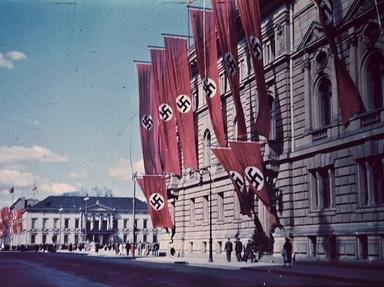Quiz Answer Key and Fun Facts
1. Rudolf Hoess is one of history's great enigmas. On one hand he was a mass murderer, on the other a hugely compassionate father and husband. He seemed to view his family life and his work life as mutually exclusive - never to be mixed. What position did he hold between the years, 1940 and 1943? SS-Kommandant at ________.
2. Rudolf Hoess was born in 1900. Whereabouts in Germany was he born and brought up?
3. In 1924, Rudolf Hoess was sentenced to a decade imprisonment in Brandenburg Penitentiary. This was for the murder of which alleged traitor to the nationalist cause?
4. After being released early from his term of incarceration, Hoess joined a society in 1929 where he would meet Heinrich Himmler. Which society was this?
5. Rudolf Hoess received promotion after promotion. After a short while at the SS (Schutzstaffel) he was assigned a role within the SS-Totenkopfverbände. What is this known as in English?
6. Rudolf Hoess was the mind behind the introduction of what would turn out to be the main method of mass murder during the 'Final Solution'. What method was it?
7. Towards the end of 1943, Hoess was promoted to the position of chief inspector of all concentration camps in Europe. He was given gleaming reports by the SS and was well known for his "good" work and efficiency. Later, when the Third Reich was in immediate danger of capitulation, he fled. What did he change his name to?
8. Hoess stated in his post-war Nuremberg testimony that millions of Jews perished in the concentration camp where he was SS-Kommandant. He also stated that 400,000 of the Jews were from which of the following eastern European countries?
9. In 1946-47, Hoess was incarcerated in prison. Whilst there, what did he spend most of his time doing?
10. Hoess was sentenced to death by hanging. Where was the execution to be carried out?
Source: Author
jonnowales
This quiz was reviewed by FunTrivia editor
bloomsby before going online.
Any errors found in FunTrivia content are routinely corrected through our feedback system.
